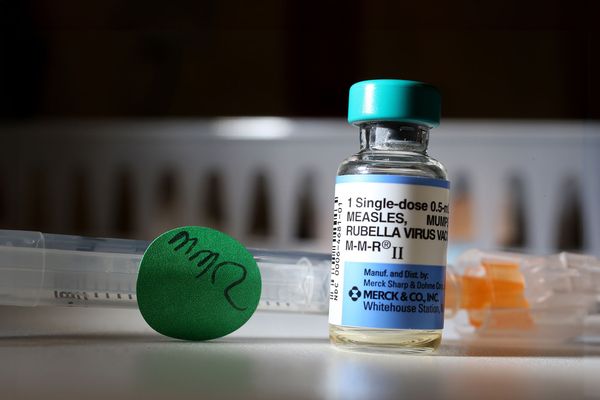
Attempts by the Greek coastguard to tow a fishing trawler carrying hundreds of migrants may have caused the vessel to sink, according to a new investigation by the Guardian and media partners that has raised further questions about the incident, which left an estimated 500 people missing
The trawler carrying migrants from Libya to Italy sank off the coast of Greece on 14 June. There were 104 survivors.
Reporters and researchers conducted more than 20 interviews with survivors and drew on court documents and coastguard sources to build a picture of missed rescue opportunities and offers of assistance that were ignored. Multiple survivors said that attempts by the Greek coastguard to tow the vessel had ultimately caused the sinking. The coastguard has strenuously denied that it attempted to tow the trawler.
The night that the trawler capsized, 47 nautical miles off Pylos, in south-western Greece, was reconstructed using an interactive 3D model of the boat created by Forensis, a Berlin-based research agency founded by Forensic Architecture, which investigates human rights violations.

The joint investigation by the Guardian, German public broadcaster ARD/NDR/Funk and Greek investigative outlet Solomon, in collaboration with Forensis, has given one of the fullest accounts to date of the trawler’s course up to its sinking. It unearthed new evidence such as a coastguard vessel moored at a closer port but never dispatched to the incident and how Greek authorities failed to respond not twice, as previously reported, but three times to offers of assistance by Frontex, the EU border and coastguard agency.
Forensis mapped the final hours before the sinking, using data from the coastguard’s log and the testimony of the coast guard vessel’s captain, as well as flight paths, maritime traffic data, satellite imagery and information from videos taken by nearby commercial vessels and other sources. The ship’s last movements contradict the coastguard and reveal inconsistencies within the official account of events, including the trawler’s direction and speed.
Crucially, the investigation showed the overcrowded trawler started moving westward on meeting the single Greek coastguard vessel sent to the scene. According to multiple survivor testimonies given to the Guardian and Greek prosecutors, the coastguard had told the migrants it would lead them to Italy – clashing with the official version that the trawler started moving west of its own accord. The investigation also showed the trawler had turned to the south and was almost stationary for at least an hour until, survivors said, a second and fatal towing attempt took place.

Two survivors used the 3D model to describe the towing itself, while three others, who were sitting inside or on the vessel’s lower deck, described being propelled forward “like a rocket”, but with the engine not operating. That suggests a towing attempt.
Another survivor separately said he heard people shouting about a rope being attached by the “Greek army” and described being towed for 10 minutes shortly before the trawler sank. “I feel that they have tried to push us out of Greek water so that their responsibility ends,” a survivor said after considering the map of events and reflecting on his memories of the night.
Maria Papamina, a lawyer from the Greek Council for Refugees, one of two legal organisations representing between 40 and 50 survivors, said that there had been two towing attempts recounted to her team. Court documents also show that seven out of eight survivors gave accounts to the civil prosecutor of the presence of a rope, towing and a strong pull, in depositions conducted on 17 and 18 June.

The exact circumstances of the sinking cannot be conclusively proved in the absence of visual evidence. Several survivors testified to having had their phones confiscated by the authorities and some mentioned having filmed videos moments before the sinking. Questions remain over why the newly acquired Greek coastguard vessel at the scene did not record the operation on its thermal cameras. The vessel, called the 920, was 90% financed by the EU to bolster the capabilities of Frontex in Greece and is part of the EU border agency’s joint operations in the country. Frontex recommends that “if feasible, all actions taken by … Frontex co-financed assets should be documented by video consistently”.

In official statements the Greek coastguard said the operation was not recorded because the crew’s focus was on the rescue operation. But a source within the coastguard said cameras do not need constant manual operation and are there precisely to capture such incidents.
The presence of masked men, described by two survivors as attaching a rope to the trawler, is also documented in the ship’s log, which includes an entry about a special ops team known as KEA joining the 920 that night.
According to coastguard sources, it would not be unusual to deploy KEA – typically used in risky situations such as suspected arms or drug smuggling at sea – given the vessel’s unknown status, but one source said that their presence suggested the vessel should have been intercepted on security and maritime safety grounds alone.
One source described the failure to mobilise help closer to the incident as “incomprehensible”. The 920 was deployed from Chania, in Crete, about 150 nautical miles from the site of the sinking. The source said the coastguard had somewhat smaller but still capable vessels, based in Patras, Kalamata, Neapoli Voion and even Pylos itself. The 920 was ordered by coastguard HQ to “locate” the trawler at about 3pm local time on 13 June. It finally made contact close to midnight. An eyewitness official confirmed another vessel was stationed in Kalamata on 14 June and could have reached the trawler within a couple of hours. “It should have been a ‘send everything you’ve got’ situation. The trawler was in clear need of assistance,” the source said.
The Greek coastguard and Frontex were alerted to the trawler on the morning of 13 June. Both agencies had photographed it from the air but no search and rescue operation was conducted – according to the Greek side, because the boat had refused assistance. Authorities received an urgent SOS said to have been relayed to them at 5.53pm local time by the small boats emergency hotline Alarmphone, which was in contact with people on board.

Two of the coastguard sources told the Guardian they believed towing was a likely reason for the boat capsizing. This would not be without precedent. In 2014, an attempt to tow a refugee boat off the coast of Farmakonisi cost 11 lives. Greek courts cleared the coastguard, but the European court of human rights passed a damning judgment in 2022.
Allegations have also been made that survivors’ statements were tampered with. Two rounds of testimonies were given – first to the coastguard and then to a civil prosecutor – both seen by the Guardian. Testimonies to the coastguard by two separate survivors of different nationalities are word for word the same when describing the sinking: “We were too many people on the boat, which was old and rusty … this is why it capsized and sank in the end.”
Under oath to the civil prosecutor, days later, the same survivors describe towing incidents and blame the Greek coastguard for the sinking. The same Syrian survivor who stated in his coastguard testimony that the trawler capsized due to its age and overcrowding would later testify: “When they stepped on it, and I am sorry to mention this, our boat sank. I believe the reason was the towing by the Greek boat.”

Brussels has asked for a “transparent” investigation into the wreck, while there is frustration within Frontex, which repeatedly offered assets to Greek authorities – a plane twice and later a drone – but received no reply. Although Frontex is facing mounting calls to pull out of Greece, the Guardian understands it is considering less drastic measures such as discontinuing co-financing of Greek coastguard vessels.
The Coast Guard said it “would not comment on operational issues or the ongoing investigation which is confidential according to a Supreme Court Order.”
Nine Egyptians on the trawler have been arrested on charges including involuntary manslaughter, causing a shipwreck and migrant smuggling; they deny wrongdoing. According to Guardian information, the accused testified there were two towing attempts, the second resulting in the sinking of the boat. A brother of one of the accused said his sibling paid about £3,000 to be on the boat, amounting to proof, he said, that he was not a smuggler.
In Greece and beyond, survivors and victims’ families are trying to understand what happened. Three Pakistani survivors said they flew from Pakistan through Dubai or Egypt to Libya. Two believed they would fly from Libya to Italy and were shocked on seeing the trawler. “I can’t sleep properly. When I sleep I feel as if I am sinking into the water and will die,” one said.

Nearly half of the estimated 750 people on board are thought to have been Pakistani citizens taking an emerging people-smuggling route to Italy. Pakistani authorities estimate that 115 came from Gujranwala in the east of the country, a region known for its rice plantations and cotton fields but deeply mired in Pakistan’s economic crisis.
Ahmed Farouq, who lives on the outskirts of the city of Gujranwala, lost his son in the Pylos shipwreck. Talking of the alleged towing, he saids: “They wanted it to sink. Why didn’t they save the people first? If they don’t want illegal migrants, let them deport us, but don’t let us drown.”







